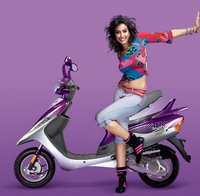Agency : Situations
Brand Count : 256
 t. Emami was looking for ways to challenge the Fair and Lovely brand from HUL. Emami had a brand Naturally Fair which was small compared to FAL.
t. Emami was looking for ways to challenge the Fair and Lovely brand from HUL. Emami had a brand Naturally Fair which was small compared to FAL.Watch the TVC here : Fair and Handsome
The brand is being positioned as the fairness cream that can make men handsome and also attractive to girls. The brand uses the tagline : Be fair Be Handsome . Whether the campaign is lousy or not , after two years of launch , Fair and Handsome is worth Rs 45 Crore now commanding a market share of over 30-40% in the segment.
The brand has to be appreciated for creating a category. It is true that men uses creams meant for women. Hence there is a logic in creating a brand for men in this category. The total fairness market is estimated to be around Rs 900 crore and men's segment is around Rs 160 crore. Although Fair and Handsome has gained the first mover advantage, already competition is hotting up. HUL has extended FAL into men's category with a variant Menz Active. Nivea and Lo'real also have moved into this segment. Unlike Fair and Handsome ( FAH), other brands are little subtle in positioning their brands as a fairness cream.
Nivea uses the term Whitening while Lo'real positions the men's range Men Expert has a range of skin solutions for men. However HUL directly positions its Menz Active as a fairness cream but the target market are older men aged 25-35 . These brands faces the issue of the reluctance of men to be seen using a cream because cosmetics traditionally is viewed as a category meant for females. Situations are changing and the Metrosexuals are least bothered about openly caring about their looks. The changing face of modern man is definitely indicating a big opportunity to these brands.
In the face of emerging competition Emami has moved aggressively to promote Fair & Handsome by roping in Bollywood icon ShahRukh Khan as its brand ambassador. The TVC featuri
 ng SRK is already on air.
ng SRK is already on air.According to a report in agencyfaqs, SRK was initially skeptical about endorsing a fairness brand for PR reasons, However Emami was able to convince SRK into endorsing this brand. Fair& Handsome is the first brand to target men. It was followed by Fair and Lovely extending itself to men's variant Men's Active. Now this segment is seeing lot of activity .
Fair and Handsome is banking on its 5 power Fairness System :
1.Double Strength Peptide complex which was developed in collaboration with Activor Corp. USA.
3.Stress Busters: prevent wrinkles
4.Anti Bacplus : anti bacterial
5.Herbo Cool : herbal ingredients.
The brand website also gives an interesting chart
 that explains why fairness is important.
that explains why fairness is important.This chart in a way explains the Brand's thought process.
Fair and Handsome retains the original tagline : Be Fair, Be Handsome" in the new campaign also.
The brand gives an impression that the users are having a lack of confidence and feels insecure and have less self esteem. Again the brand assumes that Fairness gets women attracted towards men. I feel that the brand still lives in the stone age.
I feel that FAH has got its assumptions wrong. By depicting the main hero of the ad as a person with low self esteem, the brand is repelling lot of self assured men who wants to take care of their skin rather than attracting chicks. Gone are the days where Indian men had a complex about the skin color influenced by the long oppression by the British. Now the urban male is a more evolved one . ( I am not denying the fact that there are people who have complex about being not fair) . Men are more exposed to sun and dust and the traditional creams may not be effective for men. Hence such brands should address the host of issues faced by men rather than talking about being attractive to girls. I feel that FAH by default is restricting itself to the Fairness proposition ( which is not a bad idea ).
Even when you are addressing the issue of fairness, the brand have to project itself as an aspirational brand rather than as one for losers. Even the new campaign fails terribly in execution.
What do you think ?
source : agencyfaqs,business standard,fairand handsome.net












